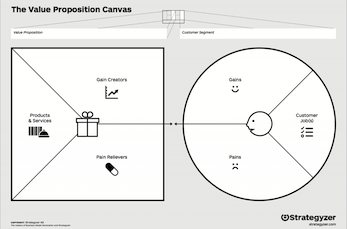The guide to creating products that customers really want
In today’s “big data world”, companies have the opportunity to access all the information they need to strive for creating great products and services, yet they often fail to deliver the right ones to customers. Research shows that customers don’t really care about seven out of every ten products. How is that possible? And more importantly, how can it be avoided?
Either companies use wrong business modelling methods, requiring months of planning and preparation, thus missing the opportunity or they simply make wrong assumptions about their customers. Design and research teams often spend a lot of time and effort on figuring out which products and services they should create, yet they forget one simple thing: to ask the customer. Although it is also true, sometimes, in case of ground-breaking innovations, customers might not know what they want in advance, as in Henry Ford’s famous quote:
“If I had asked people what they wanted, they would have said faster horses.”
But those are the minority cases.
To overcome these issues, there is a great easy-to-use tool, named Value Proposition Canvas, designed by Alexander Osterwalder. The Canvas helps to understand both the customer and the value proposition (aka. the products and services offered), but instead of the product, the Canvas puts emphasis on the customer.
To understand the customer, we should understand the actions they perform in their business or everyday life, the problems they struggle with and the gains they want to achieve. Once all of these are uncovered, we can start thinking of products or services by completing the value map part of the Canvas. We map out the product idea to help customers complete their jobs, to relieve customer pains and create customer gains and verify that the value map fits the customer. Do those products and services really address customer pains and gains and help customer actions?
If the answer is yes, or mostly yes, we have a good start.
If the answer is no, we have an opportunity to avoid spending money on developing a product that will not be needed.
Will it be this easy? Well, not exactly. Value Proposition Canvas is just the start. Even if there is a fit between the customer profile and the value map, all assumptions need to be tested and then a business model needs to be designed. In future posts we’ll introduce the Business Model Canvas and the Environment Map, simple, yet powerful tools to help with this challenge.
To learn more about Value Proposition Canvas and Business Model Canvas, join our Advanced Product Owner classes.

